How to Store Books
Some like their books kept in pristine condition, while others are fine with having them bent, well-read, and kept in random places. Either way, books should be accessible, well-organized, and stored safely. Here are some ideas and tips regarding book storage that 5-Minute Crafts has put together for you.
1. Create the right environment for your book storage.
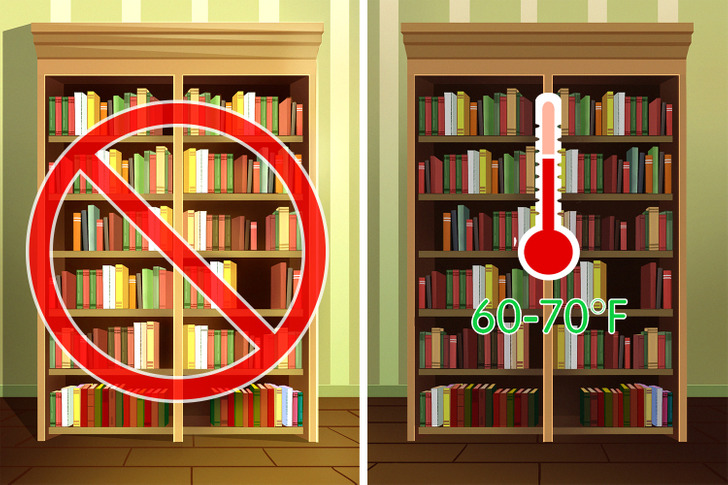
Book lovers should first have in mind the necessary environmental conditions for safe book storage, in order to avoid book damage, like bending or cracking.
- Avoid humidity or an environment that is too dry. Humidity can lead to mold in your books, while a room that is too dry can make the pages brittle.
- Keep the temperature moderate and the room well ventilated. Ideally, the temperature of the room where you keep your home library should be at 60-70°F. Make sure the temperature in the room doesn’t vary too much.
- Keep them away from direct sunlight. The color of the book covers can fade away due to direct contact with sunlight. The heat from the sun will not do the books any good either. This is why you should avoid storing books next to windows or use sun-blocking curtains.
- Avoid exterior walls. Put your bookshelf against an inside wall because this way books will not get exposed to the outside temperature changes.
2. Place your books in a book storage space properly.
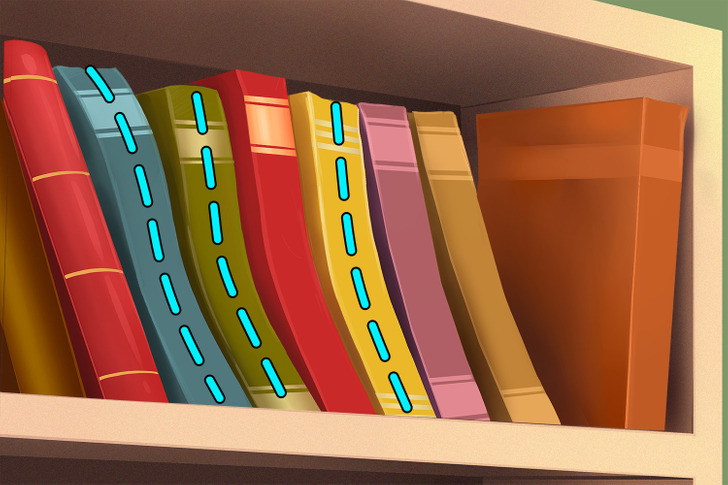
- Keep your books in the upright position. The spine is the most important part of the book because it holds it together, so we should make sure to not damage it. The upright position is the safest one. This way we protect the book shape by making them support each other. Place similar-sized books next to each other and use bookends to keep them in place.
- Don’t overfill the shelf. If you place too many books on your shelf, there will be pressure on the sides that can damage their covers and spine. There should be enough space between vertically placed books to easily insert an envelope. Be aware that they shouldn’t be loosely leaning one on another either, because this can also cause damage.
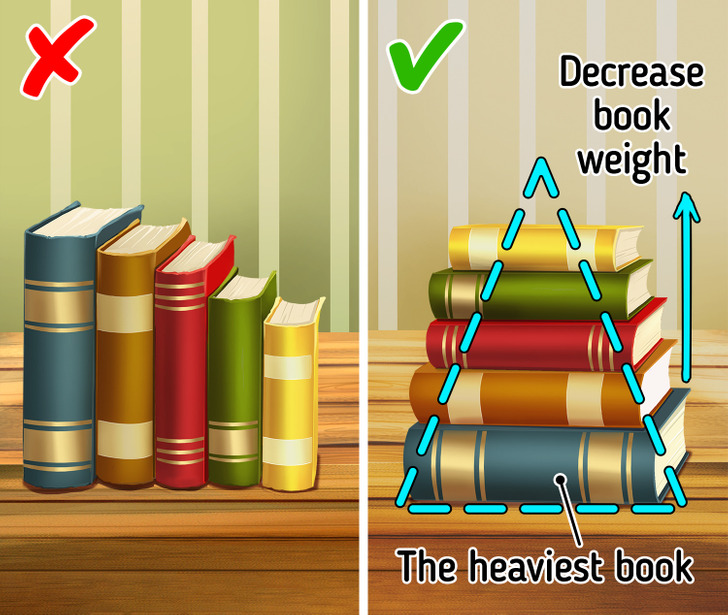
- Keep heavy books horizontal. Make sure your large folio books (those of 15’’ in height or larger) are stored horizontally and placed one on top of the other. However, make sure you don’t make the stack too high because this will accumulate too much weight on the books on the bottom and can damage their spines. Instead, keep them in a pyramid-shaped structure.
- Use metal shelving instead of wooden shelving. The best option is to use rust-proof metal shelves for book storage. Wooden shelving can be damaging for books because the acids of the wood can transfer to the books. For instance, oak is considered a very acidic wood. This is why you should coat your wooden bookshelves with a water-based polyurethane varnish to protect the wood before you place your books on them.
3. Choose smart shelving.
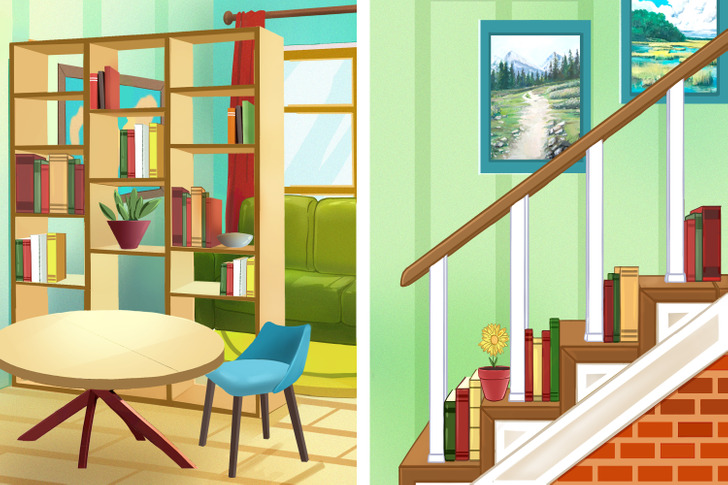
The next step would be to use functional shelving for your books. Multiple shelving isn’t always a space-saving option, so let’s take a look at some less common ideas:
- Install a room dividing bookshelf. This way you have a multifunctional piece of furniture both for book storage and for dividing your room into separate zones.
- Place your books under the stairs or between the staircase railings. Use the empty corners under your stairs and add some personal flair to them to make a unique book display. You can also turn your staircase railing into a spot for displaying your books. Make sure you position them vertically.
- Install a revolving bookshelf. Besides being a relatively small piece of furniture that can fit in an empty corner, a revolving bookshelf can store much more books than a regular one. Plus, you can add other items to make it more personalized.
- Install ladder book storage. Bring new life into your old ladder and use it as a creative book display.
4. Do proper book maintenance.
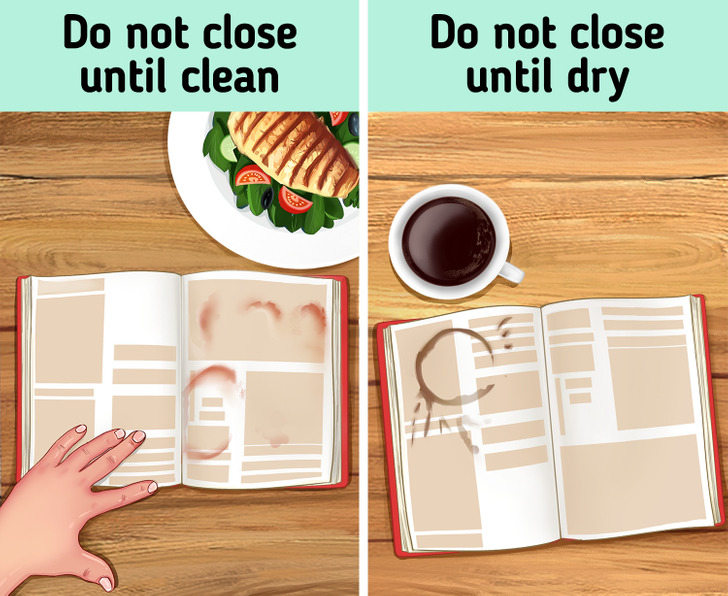
- Inspect books for food or liquid damage. If you like to have a snack or drink while reading or cook while looking at the recipe, make sure you check to make sure there is no food or liquid residue before you place the book back on its shelf, to avoid mold or mildew.
- Use dust jackets. Although they may seem unaesthetic, dust jackets are convenient for wrapping your books to protect them from dust, dirt, cracks, and rips. Your books will always look brand new.
- Dust your shelves regularly. Don’t forget, dust is damaging too.
- Check on your books. This is especially important if you keep your books in containers that are put away.
Bonus part: How to store children’s books
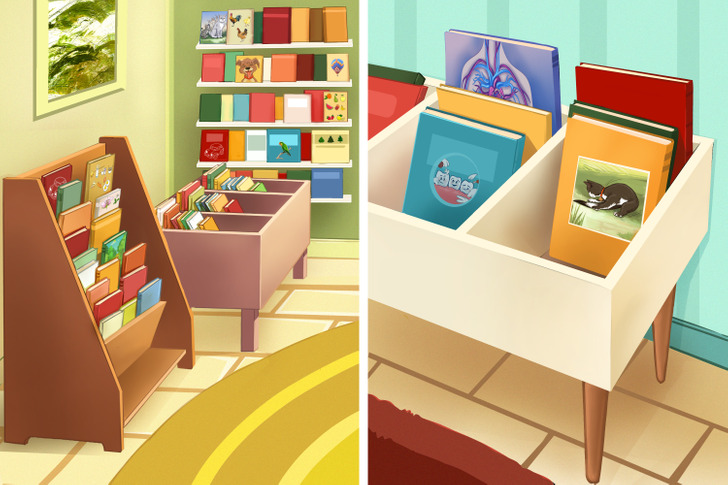
Books are also an inevitable part of a kid’s room. Here are some ideas for how to make them more visible, accessible, and attractive to your children:
- Display case. A display case can look the same as in a bookstore. Make sure it is not too high, as you would want them to be within your child’s reach. This way storing books shows off the covers, so they are more visible and appealing to kids.
- Open shelving (including floating shelves). You can use the same type of display here as well. Floating shelves hung in a random place on the wall are also an option, and those in the shape of clouds are quite popular nowadays.
- Book bin. This kind of bin can have separate sections (i.e., for favorite books, books to be read, and those that can be given away), so your child can browse through them, just like we do with vinyl records.
- Color coordination. You can separate the books on different shelves by colors, or put them on a longer shelf in a rainbow gradation of colors. By using this method, your child will always know where each book belongs.